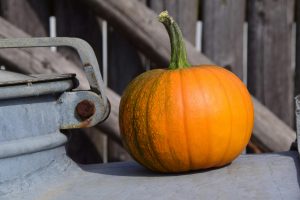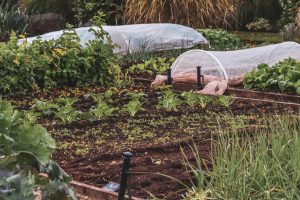
Pumpkin Growth Hack: Fertigation Tips for Halloween Patch Success
October is the season of pumpkins. From farmers preparing their harvest for markets, to landscapers designing festive displays, to families visiting pumpkin patches for Halloween

Every growing season brings its own set of challenges, but fall is unique. While summer is about maintaining lush growth and peak harvests, fall is about strengthening what is beneath the surface. October is the pivotal moment when farmers, landscapers, and home gardeners should be thinking about preparing their soils and plants for the colder months ahead. Among the most powerful tools available during this season is potash, a fertilizer that provides potassium in a concentrated and highly effective form.
Potash is not always the first nutrient that comes to mind when people consider fertilization, but it plays a critical role in building resilience and improving the overall health of plants. Potassium is the third macronutrient in the familiar N-P-K ratio, and while nitrogen drives foliage growth and phosphorus fuels flowering and fruiting, potassium is the nutrient that ensures plants are ready to handle stress.
As growers move into October, applying potash can be a strategic move that strengthens root systems, improves winter hardiness, and sets the stage for success in spring. At Supply Solutions LLC, potash is part of the lineup of essential products designed to help farmers, landscapers, and gardeners make smart decisions that match the season’s demands.
Potash is a broad term used for various mined and manufactured salts that contain potassium. The most common type used in agriculture is muriate of potash (MOP), chemically known as potassium chloride. Potash supplies potassium in a form that plants can readily use, making it an efficient and cost-effective option for boosting soil fertility.
Potassium, delivered through potash, serves a wide range of functions in plant physiology:
When applied in the fall, potash becomes a soil investment that delivers benefits not only during the current season but also into the next year.
Many growers wonder why potassium should be applied in October rather than waiting for spring. The answer lies in plant biology and soil dynamics.
October is an ideal time to apply potash because soils are still workable, and precipitation from fall rains and winter snow will help move nutrients into the root zone.
Farmers face constant pressure to maximize yields while controlling costs. Potash plays a critical role in meeting these demands.
For row crop farmers, potash is not optional but essential. Fall application allows nutrients to integrate into the soil, providing a foundation for spring planting without the rush of in-season fertilization.
Landscapers focus on keeping customer properties healthy, attractive, and resilient. Potash is an underutilized tool that can significantly improve outcomes.
By offering potash applications in October, landscapers can provide real value to clients who want properties that look their best in spring and survive winter without damage.
For home gardeners, potash offers practical benefits that make soil care easier and more rewarding.
For gardeners who want to see their efforts pay off in the long term, potash is a low-cost, high-return amendment that fits naturally into fall routines.
Correct application ensures maximum benefits and avoids waste.
Some growers hesitate to apply potash in fall because of concerns about leaching or inefficiency. However, potassium binds strongly to soil particles, especially in clay and loam soils. While sandy soils may see some leaching, in most conditions potash remains available until spring.
Another concern is chloride sensitivity in certain crops. While most crops tolerate muriate of potash, sensitive crops like potatoes or some fruits may benefit from sulfate of potash instead. The key is understanding crop requirements and choosing the right form of potassium fertilizer.
At Supply Solutions LLC, potash is part of a carefully selected portfolio of fertilizers designed to meet the needs of farmers, landscapers, and gardeners. With high-quality muriate of potash Muriate of Potash (0-0-60), you can be confident that you are applying a reliable and effective source of potassium.
The advantage of sourcing from Supply Solutions LLC is not only product quality but also the support and expertise that comes with it. The team understands the seasonal demands of soil care and provides guidance to ensure products are applied in ways that maximize return on investment.
Fall fertilization is not just about preparing for winter. It is about investing in the soil so that spring growth is healthier, more resilient, and more productive. Potash delivers exactly that outcome by addressing the often forgotten nutrient that plants rely on for stress tolerance and survival.
As October sets in and growers shift focus from harvest to soil recovery, potash deserves a central place in every fertility program. Farmers will see stronger crops, landscapers will deliver healthier lawns and landscapes, and gardeners will enjoy gardens that bounce back in spring with more vigor.
By applying potash now, you are not only replenishing what has been removed but also preparing your plants to withstand cold, disease, and stress. The benefits extend far beyond winter, carrying into the next growing season with tangible results.
For muriate of potash and other trusted fertilizers, visit Supply Solutions LLC. Reach us through our contact form, message us on Facebook, call 503-451-1622, or email sales@mysolutionssupply.com to learn more about how potash can strengthen your soil and plants this fall.

October is the season of pumpkins. From farmers preparing their harvest for markets, to landscapers designing festive displays, to families visiting pumpkin patches for Halloween

Fall soil care is about more than just replacing what crops, lawns, or gardens have consumed over the growing season. It is about setting the
Give us a call or visit our store, and we’ll help you find the right solution for your business.
© Supply Solutions LLC 2025